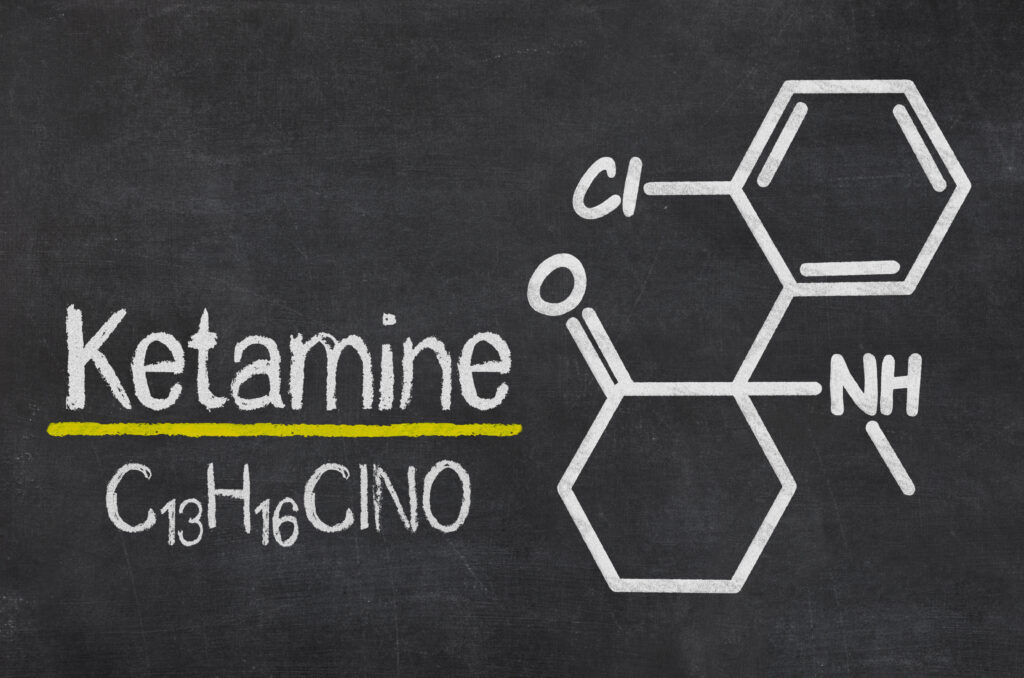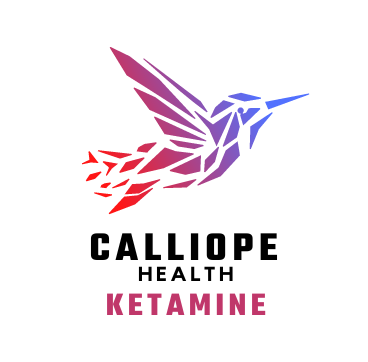Ketamine is a dissociative anesthetic that has gained attention for its rapid and robust antidepressant effects, especially in treatment-resistant depression (TRD) and post-traumatic stress disorder (PTSD). The exact mechanisms underlying its therapeutic actions are not fully understood, but several hypotheses have been proposed based on preclinical and clinical studies.

How ketamine works to treat depression and PTSD has been studied for decades. As a patient, you don’t need to know all of the scientific background about ketamine to have a very significant treatment outcome. The knowledge we share below can help your intellectual parts relax and trust the process and become an active, curious observer of how the medicine begins to change your thoughts, feelings and beliefs.
NMDA Receptor Modulation:
- Ketamine primarily acts as an antagonist at the N-methyl-D-aspartate (NMDA) glutamate receptor. The blockade of NMDA receptors results in increased glutamate release, particularly in the prefrontal cortex. This leads to enhanced synaptic plasticity, which is thought to contribute to the antidepressant effects.
- The increased glutamate release also triggers the activation of AMPA receptors, promoting the release of brain-derived neurotrophic factor (BDNF). BDNF plays a crucial role in neuronal growth, survival, and synaptic plasticity, which may contribute to the therapeutic effects of ketamine.
Synaptic Homeostasis Hypothesis:
- The synaptic homeostasis hypothesis suggests that depression is associated with a deficiency in synaptogenesis and synaptic plasticity. Ketamine’s ability to rapidly increase synaptogenesis and restore synaptic plasticity may underlie its antidepressant effects.
- By blocking NMDA receptors, ketamine allows for the removal of inhibitory constraints on synaptic plasticity, leading to the restoration of normal neural network function.
3. Monoaminergic System Modulation:
- Ketamine also influences monoaminergic systems, including serotonin and norepinephrine. Although ketamine’s primary mechanism of action is related to glutamatergic modulation, its downstream effects on monoaminergic neurotransmission may contribute to its antidepressant effects.
- The rapid onset of ketamine’s antidepressant effects, occurring within hours, is in stark contrast to the delayed onset typically associated with traditional antidepressants, supporting the idea that different mechanisms are at play.
Anti-Inflammatory Effects:
- There is evidence to suggest that inflammation may play a role in the pathophysiology of depression and PTSD. Ketamine has been shown to possess anti-inflammatory properties, which could contribute to its therapeutic effects.
- By modulating inflammatory pathways, ketamine may help regulate neuroinflammation and cytokine release, thereby influencing mood and cognition.
Neuroplasticity and Circuit Connectivity:
- Ketamine’s impact on synaptic plasticity extends to its ability to enhance neuroplasticity and restore disrupted neural circuitry. This is particularly relevant in conditions like depression and PTSD, where aberrant neural circuits are implicated.
- Imaging studies have shown that ketamine can rapidly enhance functional connectivity within the brain, suggesting a normalization of neural circuit function.
It’s important to note that research in this area is ongoing, and the precise mechanisms by which ketamine exerts its antidepressant and anti-PTSD effects are likely to involve a complex interplay of these and possibly other factors.
At Calliope Health, our clinical use of ketamine for these conditions is conducted in a controlled and monitored setting, often as part of a broader treatment plan. Our mission is bring the benefits of psychotherapy, preparation, and integration to ketamine infusions. Focusing on your whole health and your psychiatric care is vital to good outcomes, in our experience, with ketamine infusions.

